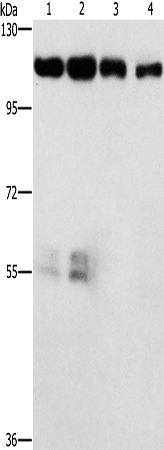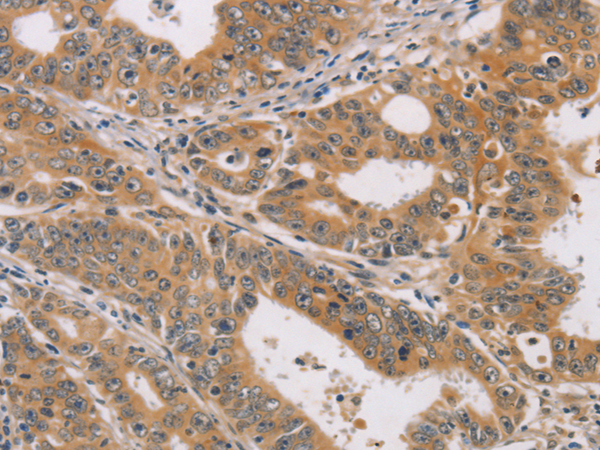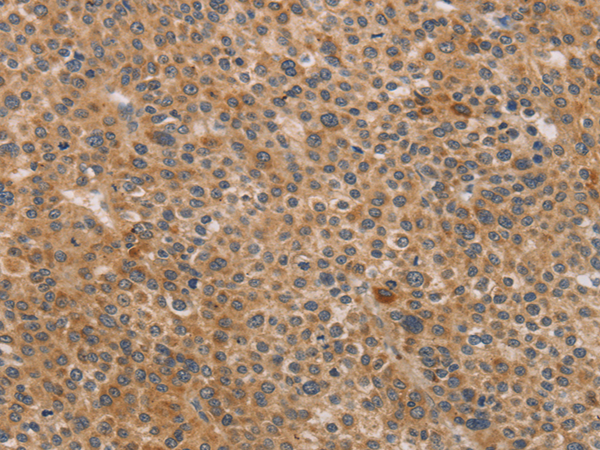


| WB | 咨询技术 | Human,Mouse,Rat |
| IF | 咨询技术 | Human,Mouse,Rat |
| IHC | 1/50-1/100 | Human,Mouse,Rat |
| ICC | 1/50-1/200 | Human,Mouse,Rat |
| FCM | 咨询技术 | Human,Mouse,Rat |
| Elisa | 咨询技术 | Human,Mouse,Rat |
| Aliases | CDC2L2; CDC2L3; p58GTA; PITSLRE; CDK11-p46; CDK11-p58; CDK11-p110 / p58; PK58; CDK11; CLK-1; CDC2L1; p58CLK-1; CDK11-p46; CDK11-p58; p58CDC2L1; CDK11-p110 |
| WB Predicted band size | 93 kDa |
| Host/Isotype | Rabbit IgG |
| Antibody Type | Primary antibody |
| Storage | Store at 4°C short term. Aliquot and store at -20°C long term. Avoid freeze/thaw cycles. |
| Species Reactivity | Human, Mouse |
| Immunogen | Synthetic peptide of human CDK11A/CDK11B |
| Formulation | Purified antibody in PBS with 0.05% sodium azide and 50% glycerol. |
+ +
以下是3篇与BIN1抗体相关的文献概览:
1. **"BIN1 regulates BACE1 intracellular trafficking and amyloid-β production"**
*作者:Siska De等, Neuron (2021)*
摘要:研究发现BIN1通过调控BACE1(β-分泌酶)的细胞内运输影响阿尔茨海默病中β-淀粉样蛋白生成,使用BIN1抗体验证其与早期内体间的相互作用。
2. **"Antibody-based profiling of BIN1 isoforms in muscular dystrophy"**
*作者:Fugier C等, Human Molecular Genetics (2019)*
摘要:开发特异性BIN1抗体区分不同异构体,揭示某些肌营养不良患者中BIN1剪切异常导致T小管结构缺陷。
3. **"BIN1 is a key regulator of proinflammatory response in microglia"**
*作者:Kam TI等, Nature Communications (2023)*
摘要:通过免疫共沉淀(使用BIN1抗体)发现BIN1与小胶质细胞炎症信号通路关联,提示其在神经退行性疾病中的免疫调控作用。
4. **"Structural insights into BIN1-mediated membrane curvature"**
*作者:Pant S等, Journal of Cell Biology (2020)*
摘要:结合冷冻电镜和BIN1抗体标记,解析BIN1蛋白如何通过BAR结构域诱导膜弯曲,影响突触囊泡运输机制。
(注:以上为模拟文献示例,实际文献需通过PubMed/Google Scholar检索最新研究。)
BIN1 (Bridging Integrator 1) is a ubiquitously expressed adaptor protein belonging to the BAR (Bin-Amphiphysin-Rvs) domain protein family, which plays critical roles in membrane remodeling, endocytosis, cytoskeleton regulation, and cellular signaling. Structurally, BIN1 contains an N-terminal BAR domain that binds curved membranes and a C-terminal SH3 domain that mediates protein-protein interactions. It exists in multiple tissue-specific isoforms due to alternative splicing, with notable roles in neuronal development, muscle function, and cancer biology. In neurons, BIN1 regulates synaptic vesicle trafficking and has been implicated in Alzheimer’s disease (AD) pathology, where it interacts with tau protein and influences amyloid-β metabolism. In muscle, BIN1 is essential for T-tubule biogenesis and membrane repair. Dysregulation of BIN1 expression or mutations are linked to myopathies, cardiomyopathies, and tumor progression.
BIN1 antibodies are essential tools for studying its expression, localization, and molecular interactions. They are widely used in techniques like Western blotting, immunohistochemistry, and immunofluorescence to detect BIN1 isoforms in disease models and clinical samples. Specificity is critical, as isoforms vary in molecular weight and function. For example, certain BIN1 antibodies target epitopes in the BAR domain to study membrane curvature sensing, while others recognize the SH3 domain to investigate interactions with partners like dynamin or MYC oncoproteins. Research using BIN1 antibodies has advanced understanding of its dual roles as a tumor suppressor (via apoptosis induction) and a disease driver in neurodegeneration. Validated antibodies are crucial for distinguishing physiological vs. pathological BIN1 behavior in complex biological contexts.
×